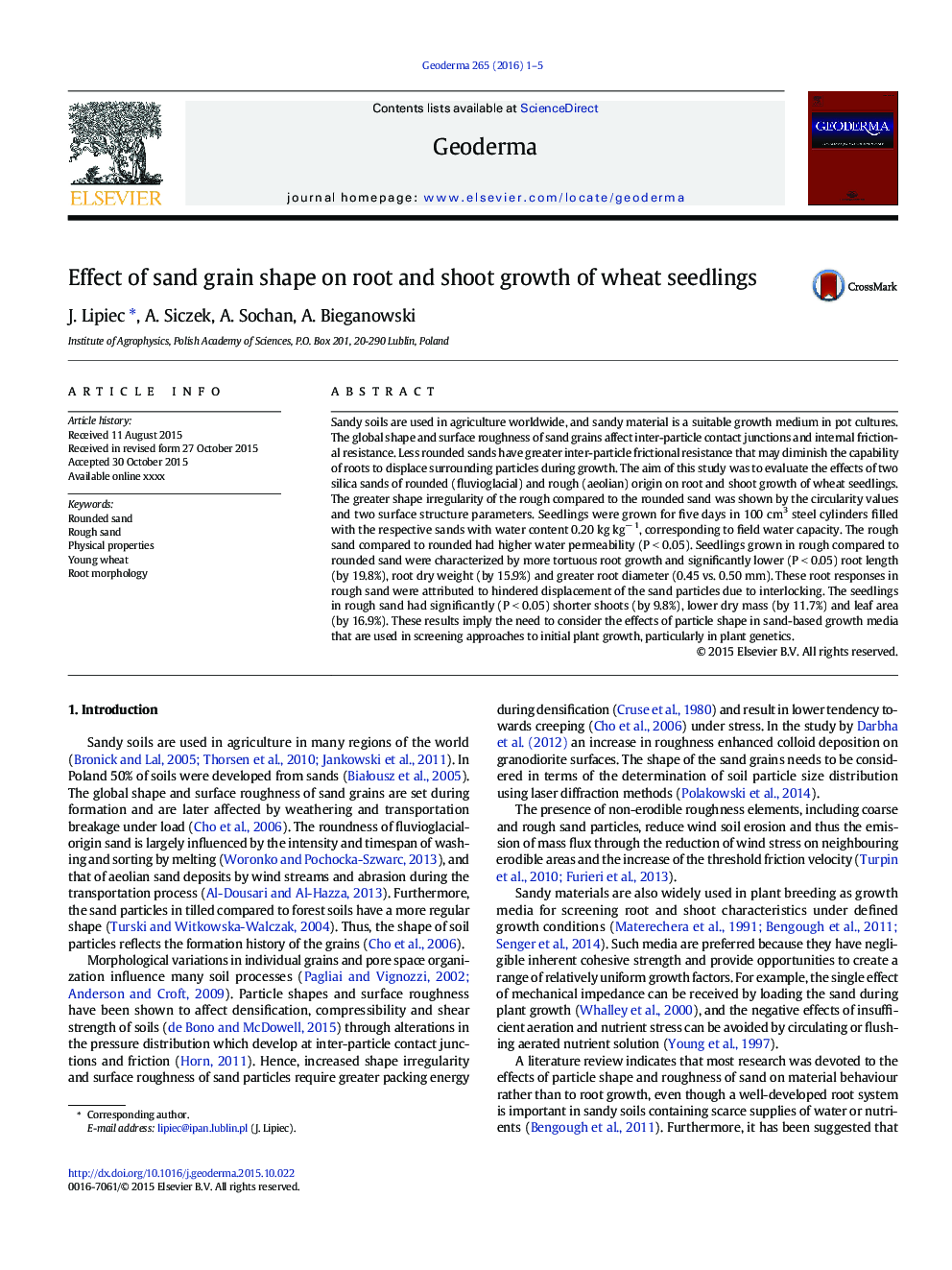| Article ID | Journal | Published Year | Pages | File Type |
|---|---|---|---|---|
| 6408416 | Geoderma | 2016 | 5 Pages |
Abstract
Sandy soils are used in agriculture worldwide, and sandy material is a suitable growth medium in pot cultures. The global shape and surface roughness of sand grains affect inter-particle contact junctions and internal frictional resistance. Less rounded sands have greater inter-particle frictional resistance that may diminish the capability of roots to displace surrounding particles during growth. The aim of this study was to evaluate the effects of two silica sands of rounded (fluvioglacial) and rough (aeolian) origin on root and shoot growth of wheat seedlings. The greater shape irregularity of the rough compared to the rounded sand was shown by the circularity values and two surface structure parameters. Seedlings were grown for five days in 100 cm3 steel cylinders filled with the respective sands with water content 0.20 kg kgâ 1, corresponding to field water capacity. The rough sand compared to rounded had higher water permeability (P < 0.05). Seedlings grown in rough compared to rounded sand were characterized by more tortuous root growth and significantly lower (P < 0.05) root length (by 19.8%), root dry weight (by 15.9%) and greater root diameter (0.45 vs. 0.50 mm). These root responses in rough sand were attributed to hindered displacement of the sand particles due to interlocking. The seedlings in rough sand had significantly (P < 0.05) shorter shoots (by 9.8%), lower dry mass (by 11.7%) and leaf area (by 16.9%). These results imply the need to consider the effects of particle shape in sand-based growth media that are used in screening approaches to initial plant growth, particularly in plant genetics.
Keywords
Related Topics
Physical Sciences and Engineering
Earth and Planetary Sciences
Earth-Surface Processes
Authors
J. Lipiec, A. Siczek, A. Sochan, A. Bieganowski,
